"It's funny how some figures disappear, but how others survive history," says Lila Komnick, administrator of Parliament's vast art collection, as she opens the door to the climate-controlled storage room where the legislature's political collection is preserved.
The first thing you see when the overhead lights flood the cavernous hall, right underneath the National Assembly and not more than 50 metres from the podium where President Jacob Zuma delivered his State of the Nation Address last Thursday, is a massive 3m high portrait of Hendrik Verwoerd, the most apartheid of apartheid premiers and a reviled figure in South African history.
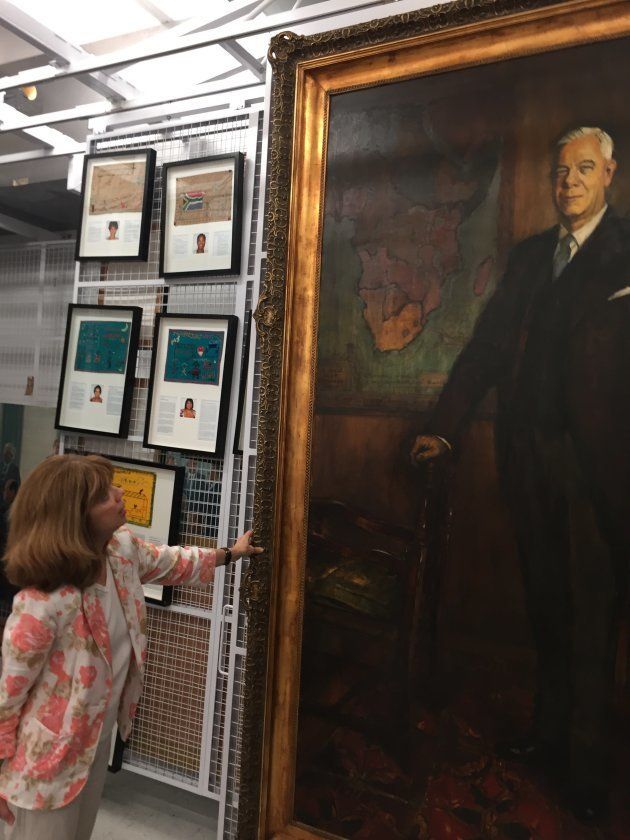
He's wearing a black dress suit, ramrod straight in a study — possibly at Groote Schuur, the official president's residence in Cape Town — with a bookshelf behind him filled with leather-bound copies of Hansard. His hands rest on a desk to his left and the back of a chair on his right respectively.
Behind him on the wall is a map of Africa, showing South West Africa — now Namibia — forming a perfect, segregated and white union.
Verwoerd, who was assassinated in the House of Assembly in September 1966, looks almost serene in the portrait, done by Dr. Irmin Henkel, one of the foremost portrait artists of his day and Verwoerd's pick to paint him. There's a grin on his face, which shines brightly compared with the rest of the painting.
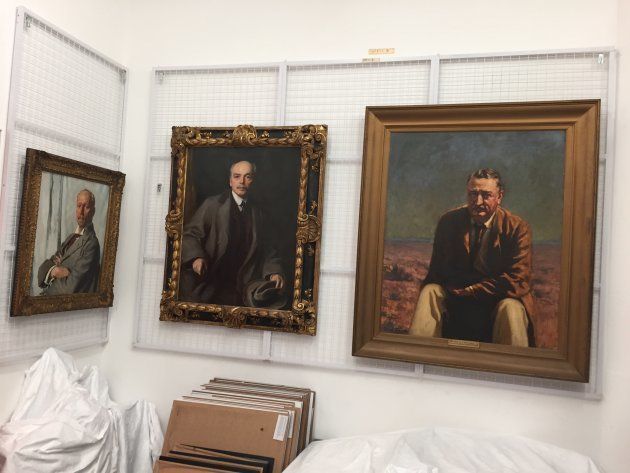
Grand, and so-called "small", apartheid was Verwoerd's design. The Group Areas Act, Separate Amenities Act, Bantu Education Act, the second Immorality Act... Verwoerd gave shape and form to the hard edge of racial segregation. And he's still in Parliament, not far from where MPs from democratic South Africa sit and craft laws and regulations trying to undo his master plan.
When Frene Ginwala arrived as the first democratically elected Speaker of Parliament in 1994 "she and her colleagues were confronted by hallways full of white people", Komnick recalls.
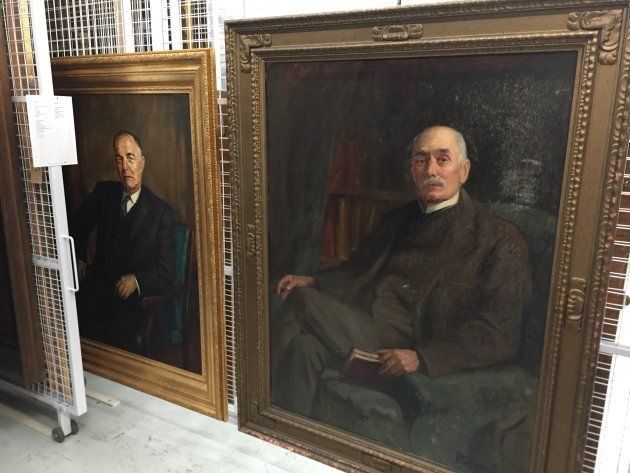
Ginwala ordered that artworks all over Parliament be taken down and put into storage — a massive project and one that attracted some criticism from the old order. "The Department of Public Works prepared a storage room that conformed to the highest standards of art preservation in the world and the whole collection was catalogued and stored away," Komnick explains.
The last official portrait done of a South African head of state was that of P.W. Botha. Komnick explains the tradition, inherited from the British Parliament, was that the institution commissions portraits of the speaker and head of state every time an election takes place. A portrait of Botha's successor, F.W. de Klerk, was never commissioned and Ginwala, when she became speaker, declined "saying she doesn't want to be a hung speaker".
There are depictions of almost every speaker that served in Parliament in the previous dispensation, as well as all heads of government and state, including John Vorster and a number of ceremonial presidents. "They were never smaller than three metres tall. They loved their portraits big and bold," Komnick says.
Public interest in the political collection — consisting of portraits, oil paintings and photographs — has remained high and it is readily accessible by the public. It has however never been put on display again after it was taken down during the Ginwala years. "Parliament has always been open to the idea that its collection must be accessible, and we would consider it if museums, for example, wanted to take pieces on loan. Colonialism and apartheid however isn't exactly the flavour of the decade," says Komnick.
There are a number of valuable works in the cellar, including portraits by some of the best artists of the day, including an oil painting of General Jan Smuts by Sir William Orpen, done at Versailles after the end of World War I. Next to Smuts are two of his nemeses, the arch-imperialists Leander Starr Jameson, done by Philip de Laszlo, and Cecil John Rhodes, by Edward Roworth.
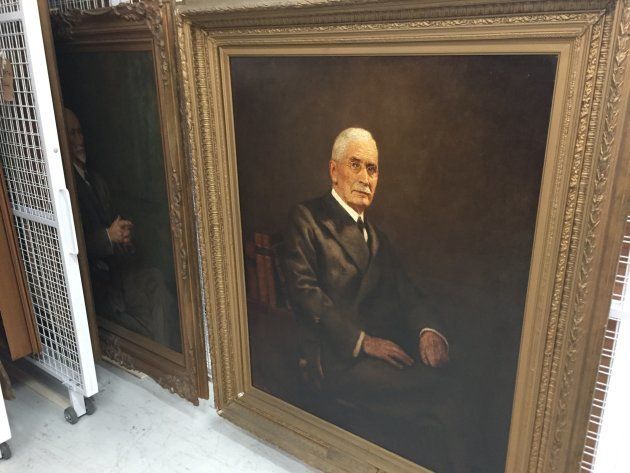
"One of the most unusual works we have is a pastel sketch of Paul Kruger, the erstwhile president of the Transvaal Republic, done shortly before his death in exile in Switzerland. We also have two massive, I mean really big — 6m in length — portraits of the National Convention from 1909 and the first republican Cabinet from 1961. Both hung in the members' dining hall and were taken down and rolled up," Komnick explains.
But it's not only apartheid art.
Ginwala also tried to expand Parliament's collection with works from female artists from rural areas, and the democratic Parliament very quickly became a sought-after exhibition space for commissioned black artists. "We try to allocate a part of our annual budget to buy more pieces. We recently bought a number of black and white photographs from the renowned lensman Peter Magubane. What makes this purchase so special is that it includes pictures of the women's march to the Union Buildings in 1956 and the Soweto uprisings in 1976, both events which he covered as a photographer."
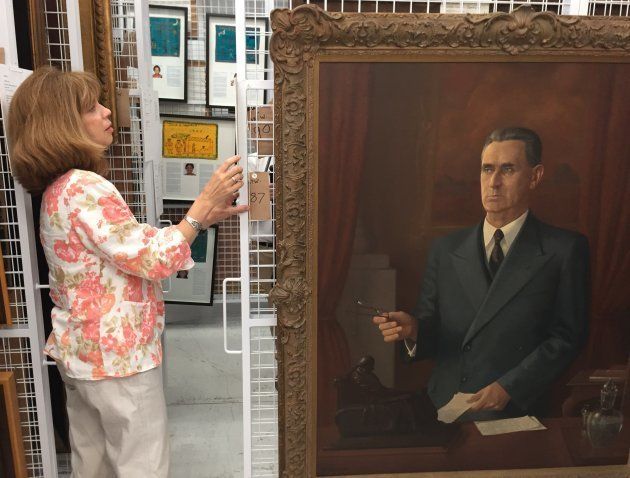
It's quite an experience to pull out the massive aluminium frames on which the portraits are mounted, titled and numbered. Many frames are filled with unknown, dour-looking speakers and politicians from the height of apartheid, while there are also a great many depictions of British administrators and officials dating back to the second British occupation of the Cape, people like Sir Thomas Smartt and James Rose Innes.
But it's the architects of apartheid that haunt, and the fact that when these portraits were completed, people like D.F. Malan and J.G. Strijdom were driving Afrikaner nationalism to its destructive heights. The bespectacled Malan, a cleric who led the Nationalists to their surprise 1948 election win, now stowed away on the bottom level of one of the frames, alongside Strijdom, the "Lion of the North" and a petty racist, square jawed and formidable.
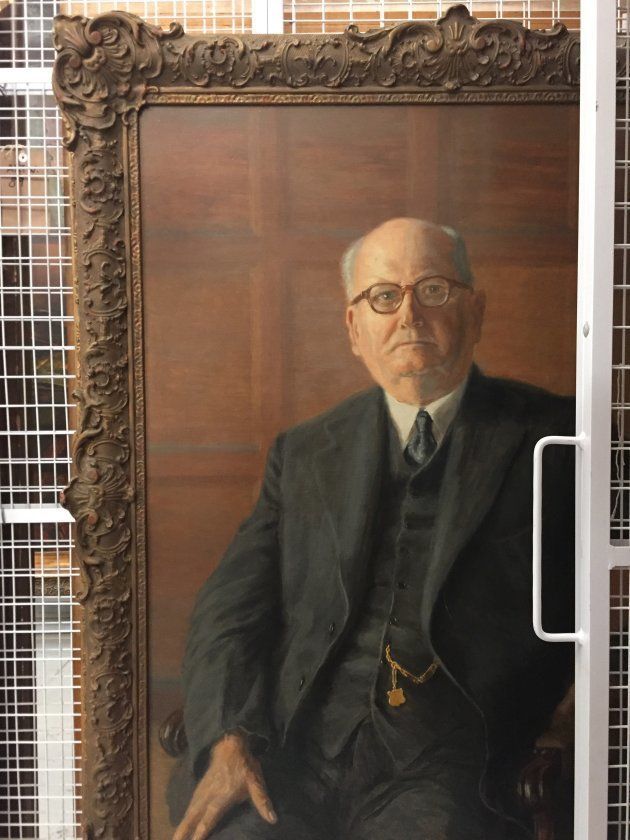
They're all there, in the dark and as a stark reminder of the past.
Parliament has a neutral stance towards the collection. It ensures it remains accessible to art experts, historians and the general public, but it seems it is not quite ready to allocate display space in the precinct. There are no plans to dispose of parts of the 7,000 piece collection however — Ginwala took a decision that it will remain the property of Parliament — and it seems it will remain in the cellar underneath the National Assembly for the foreseeable future.
"The collection is intact and in limbo," Komnick says. "But hopefully not indefinitely."